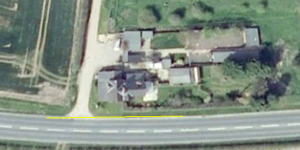No it doesnt i know a fellow class mate who did just that and failed his test for stopping for an amber light .......
he may fail for doing it as that will be judged at the time we dont know how far over the line you mate was he could have been blocking the traffic whos light was green. but if asked in the questions you have to say AMBER means ‘Stop’. if you say it means get ready to stop you will fail


